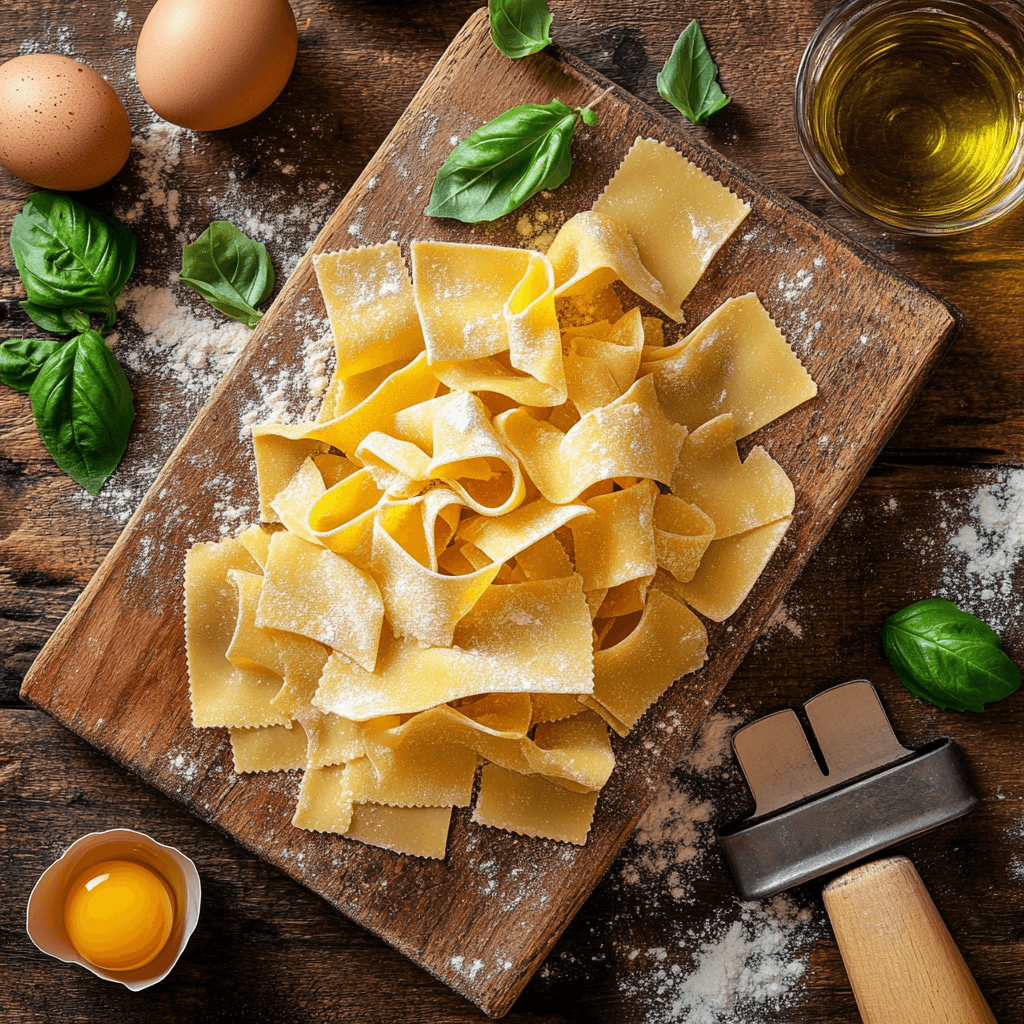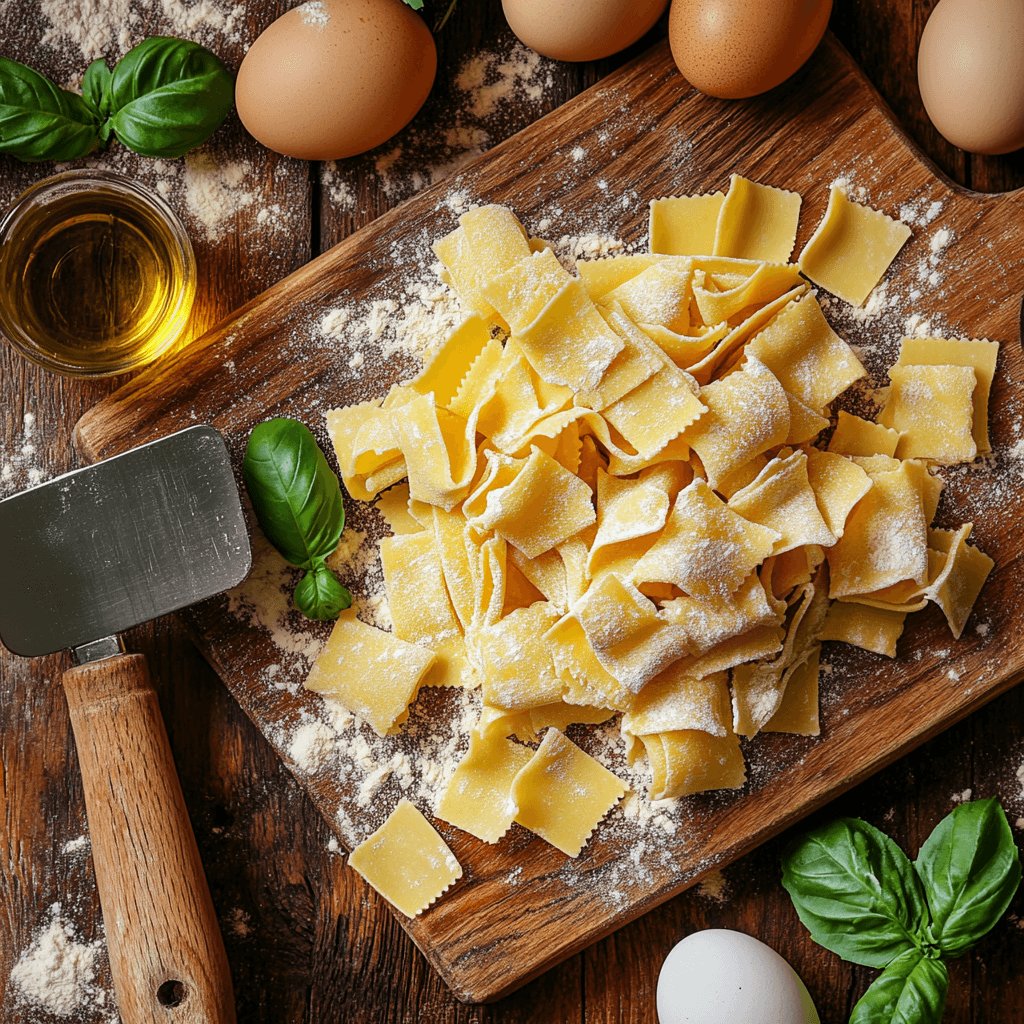There’s something special about making pasta from scratch. It’s a culinary art that combines tradition, skill, and a love for food. A pasta cutter is a vital tool in this process, transforming simple sheets of dough into beautifully shaped pasta ready to impress any guest or satisfy a craving. Whether you’re preparing fettuccine, ravioli, or lasagna, a pasta cutter makes the job easier, faster, and more precise.
In this comprehensive guide, we’ll explore the history, types, techniques, and uses of pasta cutters, along with maintenance tips, detailed recipes, and much more. By the end, you’ll be well-equipped to choose and use the best pasta cutter for your needs.
A Brief History of Pasta and the Pasta Cutter
Pasta is a cornerstone of Italian cuisine, but its origins are debated. While pasta as we know it is deeply rooted in Italian tradition, similar dishes existed in ancient China, the Middle East, and Greece. The earliest evidence of pasta dates back over 4,000 years to a Chinese noodle dish made from millet.
The Evolution of Pasta Tools
The tools for making pasta have evolved significantly over time. Early pasta was shaped by hand or using simple knives. As pasta gained popularity in Europe during the Middle Ages, specialized tools like pasta rollers and cutters began to emerge. By the 19th century, these tools became more sophisticated, leading to the pasta-making machines we see today.
Why Pasta Cutters Became Essential
Cutting pasta dough by hand requires skill and precision. Pasta cutters simplified this process, ensuring uniform shapes and sizes, which improved cooking consistency. Today, they are a must-have for professional chefs and home cooks alike.
What is a pasta cutter?
A pasta cutter is a tool designed to cut rolled pasta dough into various shapes and sizes. It can range from a simple handheld device to an electric machine with multiple functions.
Types of Pasta Cutters
1. Handheld Pasta Cutters
- Description: Simple tools with one or more cutting wheels.
- Common Uses: Cutting straight or decorative edges for fettuccine, pappardelle, or ravioli.
- Pros: Affordable and easy to use.
- Cons: Requires manual effort and may not provide perfect uniformity.
2. Manual Pasta Cutting Machines
- Description: Machines with rollers and blades for cutting pasta into long, even strips.
- Common Uses: Spaghetti, linguine, tagliatelle.
- Pros: Precise cuts and easy to use.
- Cons: Requires a flat surface and manual cranking.
3. Electric pasta cutter
- Description: Motorized machines that automate the pasta cutting process.
- Common Uses: Large quantities of pasta for entertaining or restaurants.
- Pros: Fast and consistent results.
- Cons: Expensive and requires power.
4. Specialized Pasta Tools
- Examples: Ravioli stamps, gnocchi boards, pasta wheels for decorative edges.
- Common Uses: Making filled pasta or adding intricate designs.
- Pros: Versatile and ideal for creative pasta-making.
- Cons: Limited to specific shapes.

🍝✨ Homemade Pasta with a Pasta Cutter ✨🍝
Ingredients:
- 2 cups all-purpose flour (or 1 1/2 cups all-purpose and 1/2 cup semolina flour for extra texture)
- 1/2 teaspoon salt
- 3 large eggs
- 1 tablespoon olive oil
Directions:
- Mix the dough: On a clean surface or in a large mixing bowl, combine the flour and salt. Make a well in the center and crack the eggs into it. Add the olive oil.
- Incorporate ingredients: Use a fork to whisk the eggs, gradually incorporating the flour from the edges. Once combined, knead the dough by hand for 8-10 minutes, or until it’s smooth and elastic. If the dough is too dry, add a few drops of water.
- Rest the dough: Wrap the dough in plastic wrap and let it rest at room temperature for 30 minutes. This relaxes the gluten and makes it easier to roll out.
- Roll out the dough: Divide the dough into 4 pieces. Keep the pieces you’re not working with covered to prevent drying out. Flatten one piece and roll it out with a rolling pin or pasta machine until it’s thin (about 1/16 inch).
- Use the pasta cutter: Run the rolled-out dough through your pasta cutter to create the desired shape—fettuccine, tagliatelle, or thin noodles like spaghetti. Dust with a little flour to prevent sticking.
- Cook the pasta: Bring a large pot of salted water to a boil. Cook the fresh pasta for 2-3 minutes, or until it floats to the surface. Drain and toss with your favorite sauce.
- Serve and enjoy: Plate your homemade pasta and garnish with grated Parmesan, fresh basil, or olive oil for a restaurant-quality dish.
Nutritional Information:
⏰ Prep Time | 40 minutes | 🔥 Cooking Time | 3 minutes | ⏳ Total Time | 43 minutes
⚡ 200 calories per serving | 🍽️ Serves 4
Bon appétit and happy pasta-making! 🍝✨y cooking! 🍝✨
Benefits of Using a pasta cutter
A pasta cutter offers several advantages for both amateur cooks and seasoned chefs:
1. Precision and Uniformity
Consistent size ensures even cooking and a professional appearance.
2. Time-Saving
Cutting pasta dough by hand can be tedious. A cutter speeds up the process significantly.
3. Enhanced Creativity
Experiment with different shapes, sizes, and designs to create unique pasta dishes.
4. Improved Texture
Cutters maintain the integrity of the dough, resulting in pasta that holds sauces well.
5. Ease of Use
Even beginners can achieve impressive results with the help of a pasta cutter.
Popular Pasta Shapes and How to Make Them
A pasta cutter allows you to create a variety of pasta shapes. Here are some popular options:
1. Fettuccine
- Best Cutter: Manual or electric cutter with wide blades.
- Uses: Creamy sauces like Alfredo or carbonara.
2. Tagliatelle
- Best Cutter: Manual cutter with adjustable blade settings.
- Uses: Rich meat sauces like Bolognese.
3. Ravioli
- Best Cutter: Ravioli stamp or rolling cutter with a decorative edge.
- Uses: Filled pasta with cheese, meat, or vegetables.
4. Pappardelle
- Best Cutter: Handheld cutter with wide blades.
- Uses: Hearty ragu or mushroom-based sauces.
5. Lasagna Sheets
- Best Cutter: Straight-edge cutter or pasta roller.
- Uses: Layering in baked lasagna dishes.
Tips for Using a pasta cutter
Mastering a pasta cutter requires some practice, but these tips will help you get started:
- Keep the Dough Lightly Floured
- Prevent sticking by dusting the dough and cutter with flour.
- Roll the Dough Evenly
- Uneven dough results in uneven pasta. Use a roller or machine for consistency.
- Work in Small Batches
- Cut smaller portions of dough to maintain freshness and ease of handling.
- Test the Thickness
- Different pasta shapes require different thickness levels. Adjust your cutter or roller accordingly.
- Use a Sharp Cutter
- Dull blades can tear the dough. Keep your cutter sharp for clean cuts.
Maintenance and Care for Your pasta cutter
Proper maintenance ensures the longevity of your pasta cutter. Here’s how to care for it:
- Clean Immediately
- Use a dry brush or cloth to remove dough residue. Avoid water for wooden tools.
- Avoid Harsh Detergents
- Metal parts should be cleaned with mild soap or wiped with a damp cloth.
- Store Safely
- Keep your cutter in a dry, protected space to prevent rust or damage.
- Sharpen Blades Regularly
- Maintain cutting precision by sharpening or replacing dull blades.
- Lubricate Moving Parts
- For machines, apply food-safe oil to keep the mechanism smooth.
Advanced Pasta-Making Techniques
Once you’ve mastered basic pasta shapes, explore advanced techniques to elevate your dishes:
1. Colored Pasta
- Add natural ingredients like spinach, beetroot, or squid ink to the dough for vibrant colors.
2. Stuffed Pasta
- Use a ravioli stamp or mold to create perfectly sealed pasta with flavorful fillings.
3. Textured Pasta
- Roll dough over a gnocchi board or use a ridged cutter for added texture.
4. Layered Pasta
- Experiment with layered sheets of pasta for lasagna or timbales.

Frequently Asked Questions (FAQs)
1. Can I use a pasta cutter for gluten-free dough?
Yes, but gluten-free dough is more delicate and may require extra care when rolling and cutting.
2. What’s the difference between a pasta cutter and a pizza cutter?
A pasta cutter is designed for precise cuts and often includes decorative edges, while a pizza cutter is larger and less precise.
3. Can I cut pasta without a cutter?
Yes, but a cutter ensures uniformity and saves time compared to cutting by hand.
4. How do I prevent my pasta from sticking after cutting?
Dust the pasta with semolina or flour and spread it out on a tray to dry slightly before cooking.
Related Recipes
- Lumache Pasta recipe: Learn the basics of Lumache Pasta to create perfect sheets for cutting.
- Parmesan Asiago: Pair your freshly cut fettuccine with our Parmesan Asiago.
Conclusion
A pasta cutter is an invaluable tool for anyone passionate about homemade pasta. Whether you’re a beginner or a seasoned cook, it simplifies the process and allows you to explore a wide range of pasta styles. With the right cutter, a little practice, and the tips in this guide, you’ll be crafting restaurant-quality pasta in no time. So dust off your counter, roll out some dough, and let your pasta-making journey begin!

1 thought on “Pasta Cutter: Your Guide to Perfect Homemade Pasta”